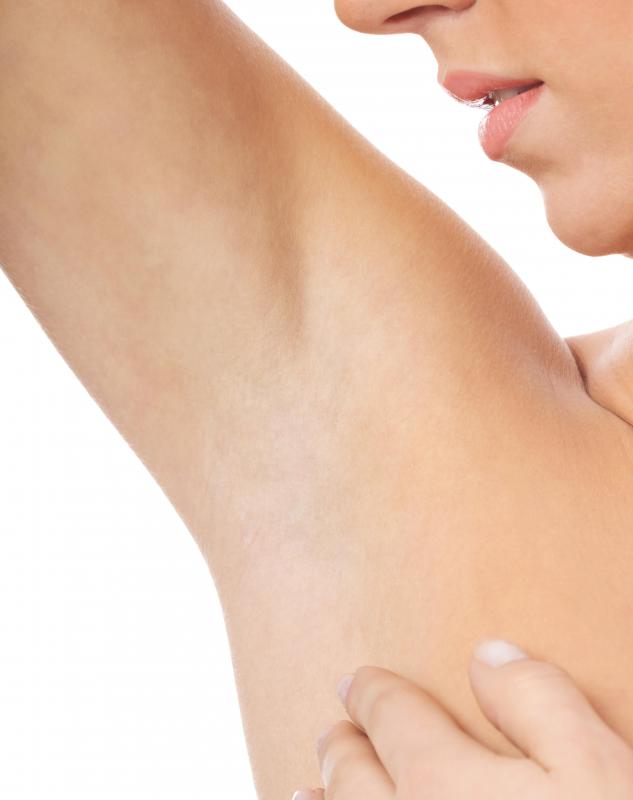At WiseGEEK, we're committed to delivering accurate, trustworthy information. Our expert-authored content is rigorously fact-checked and sourced from credible authorities. Discover how we uphold the highest standards in providing you with reliable knowledge.
What are the Best Tips for Treating Ingrown Underarm Hair?
Ingrown underarm hair is caused by a variety of factors, and the severity of the condition often depends on a person's skin and what he or she does to it. There are a number of preventative treatments for ingrown underarm hair, such as exfoliating or not shaving. If the ingrown hair is painful, it is sometimes possible to warm the area and remove the hair with sterilized tweezers. In most cases, it is not necessary to remove ingrown underarm hair, as it often falls out on its own.
The best tip for treating ingrown underarm hair is to prevent the hair from becoming ingrown in the first place. Some people are more prone to this condition than others, often due to oily skin, curly hair, or just bad luck. If ingrown hair is a major problem, laser hair removal or electrolysis can be an effective solution because the hairs themselves are removed permanently. In cases where permanent removal is not desirable, switching to a depilatory cream can reduce the frequency of ingrown hair, although using this type of cream on any area with an infection can be painful.

Shaving is one of the primary causes of ingrown underarm hair, but some shaving strategies are better than others. For instance, changing the direction in which the razor is pulled across the skin every time one shaves can help reduce the number of ingrown hairs. Some people claim that only shaving in the direction of the hair growth rather than against it is helpful, but this also often leaves undesirable stubble. Using a single blade razor can also help, but this strategy can reduce the closeness of the shave. Essentially, in order to prevent ingrown underarm hairs due to shaving, one may have to give up maintaining a close shave, as shaving closely increases the risk of ingrown hairs.

There are a number of products that can be applied to the skin to help reduce ingrown hairs as well as pain resulting from infection around those hairs. Many astringents and toners are designed specifically to prevent ingrown hairs and are thought to be relatively effective. Keeping the area clean usually does not directly reduce the number of ingrown hairs, but it does reduce the time it takes for those hairs to heal. Some creams that reduce inflammation can help calm infections due to ingrown hairs, which may also help speed up healing times.

As a last resort, it is usually possible to dig an ingrown underarm hair out of one's skin. This is often painful and may leave a scar, so it is generally considered a bad idea. It is particularly difficult to remove one's own ingrown hair from an armpit because of the necessary angle, so this procedure may require help. If one does decide to pull out the hair, it is important to use sterilized tweezers and to treat the site of the hair like an open wound. Otherwise, the resulting infection can be much worse than the ingrown underarm hair.
AS FEATURED ON:
AS FEATURED ON:













Discuss this Article
Post your comments